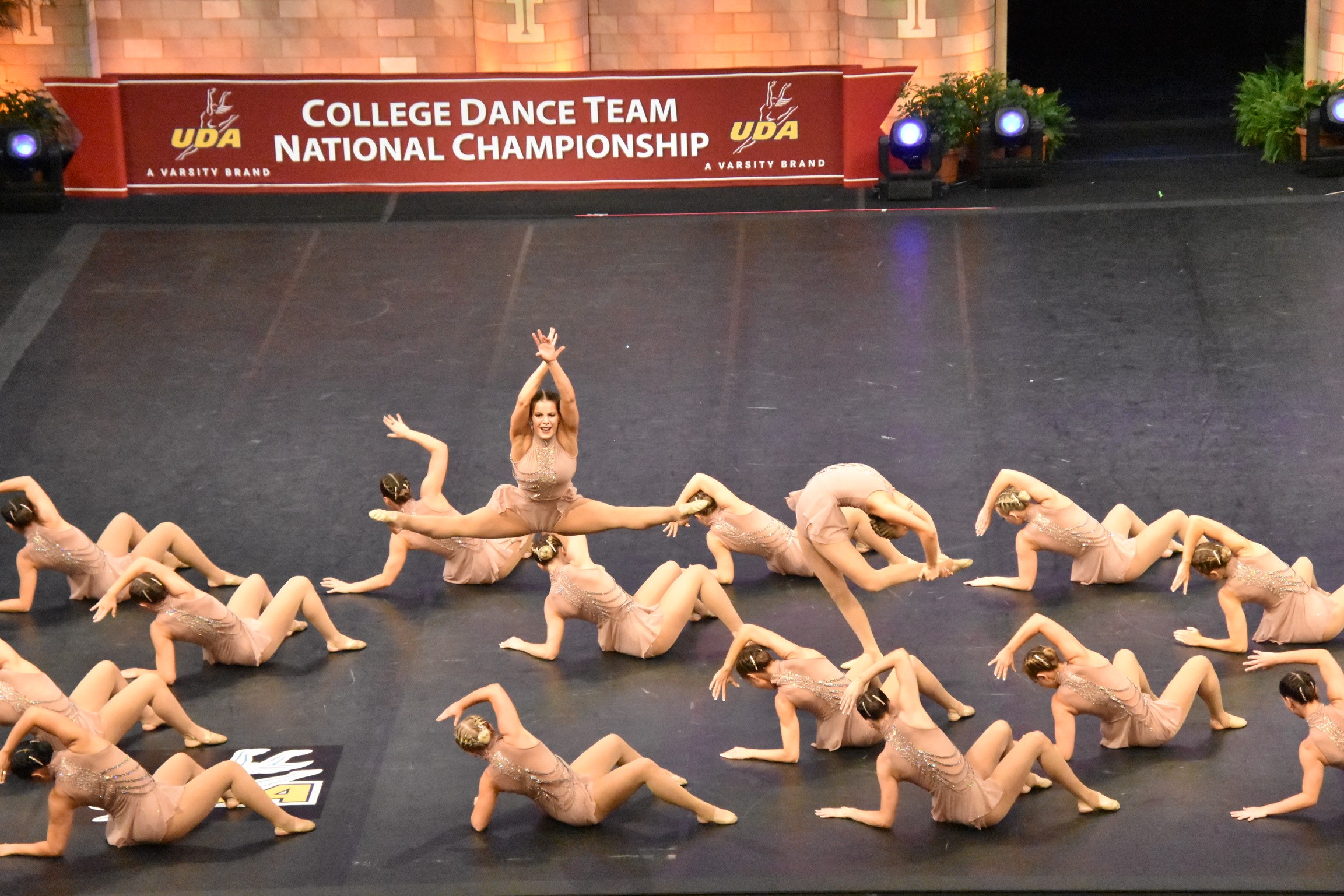Dance Team, Dance Major…or Both?
There’s something hypnotic about watching a dance team nail their group à la seconde turns or fly into a straddle leap in perfect unison. These feats of astonishing exactitude and unshakable technique don’t happen accidentally—it’s the culmination of hours upon hours of rehearsal, conditioning and competing. Because of the strenuous time demands required, dance majors sometimes assume it’s impossible to be part of the dance team on top of their already-heavy course load. But with the right tools and mindset, joining the team might be just the extracurricular you need to level up in the studio and on the stage.
Dance Team: Fact or Fiction?
Fact: It requires intense time commitments. At the University of Minnesota, BFA dance majors take two to three technique classes a day, says Carl Flink, director of the school’s dance program. Members of the University of Minnesota dance team practice three to five days a week, depending on the season, says head coach Amanda Gaines. Dancers who do both must be capable of handling the physically demanding schedule.
Fiction: It’s impossible to do both. Plenty of dancers successfully balance their dance major requirements with dance team commitments, but your university must be willing to help you accommodate both. Communicate with dance faculty about why joining the team is important to you.
Fact: It’s not for everyone. Most dance teams feature highly athletic performers with strong hip-hop technique and acrobatic skills. The focus is typically on clean lines and stunts more than individual artistry. Teams perform at football and basketball games, campus events, their own concerts and at competitions.
Fiction: Joining the dance team is counterproductive to a dance major. Some believe that the emphasis on unison and competition among dance teams is at odds with the nature of concert-dance programs, but Flink pushes back on that idea. “I’m not convinced that precision and the intensity of a team is somehow in tension with what an aspiring dance artist would want to have,” he says. Joining the team can infuse your movement with more sharpness and energy, making you a multifaceted dancer.
Dance Team Dazzle
In addition to the opportunity to perform at major sports events and compete on a national stage, dance team members enjoy advantages in and out of the studio. Rigorous conditioning gives their movement a special kind of physicality that not all dance majors have, says the Ohio State University’s Susan Van Pelt Petry. “All the people I can think of who have done dance team are all really shiny personalities,” she adds. Being on a team often shapes dancers into exceptional leaders and collaborators.
Nail Your Double Dance Demands
Juggling the dance team with a dance major is not for the faint of heart. Those who excel at both are strong time managers and prepared to make sacrifices.
• Prioritize rest. Make time for restorative practices, otherwise you run the risk of injury and burnout. Figure out how your body recovers best, whether it’s yoga, meditation, massage or just extra hours of sleep.
• Manage your expectations. Be prepared to make sacrifices in your social life and your dance major. “You have to know that you’re not going to be able to do all the experiences that are possible in the dance major,” says Susan Van Pelt Petry, interim chair of the dance department at the Ohio State University. This might mean forgoing optional performances, missing master classes or not participating in student works.
• Find your support system. On the days where your body and mind are exhausted, know who to turn to. Develop strong relationships with dance faculty, your teammates and fellow dance majors who can encourage you through difficult moments.
• Consider a BA instead of a BFA. A Bachelor of Fine Arts requires more dance credits than a Bachelor of Arts will. Students who are interested in joining the dance team may want to enroll in a BA dance program because it’s less credit intensive.




